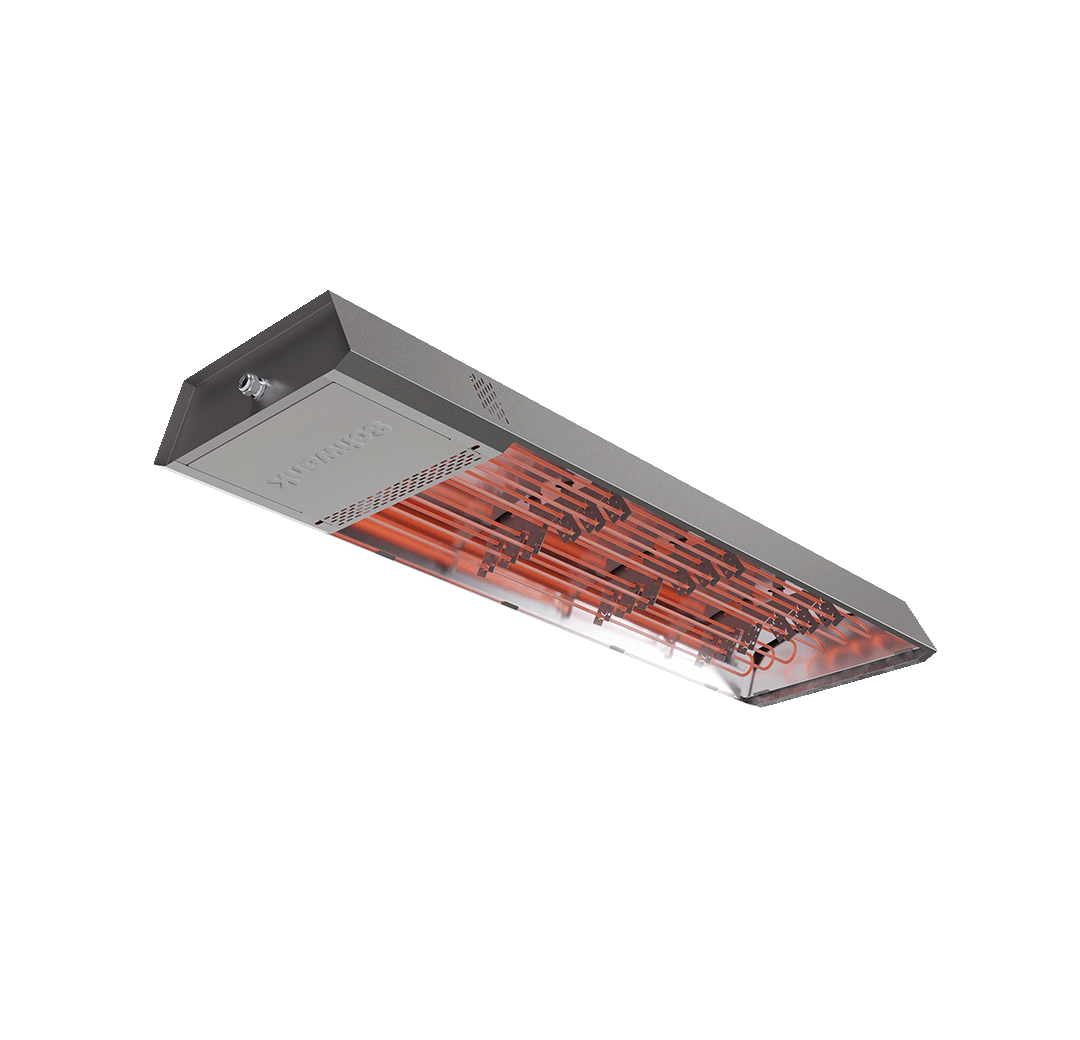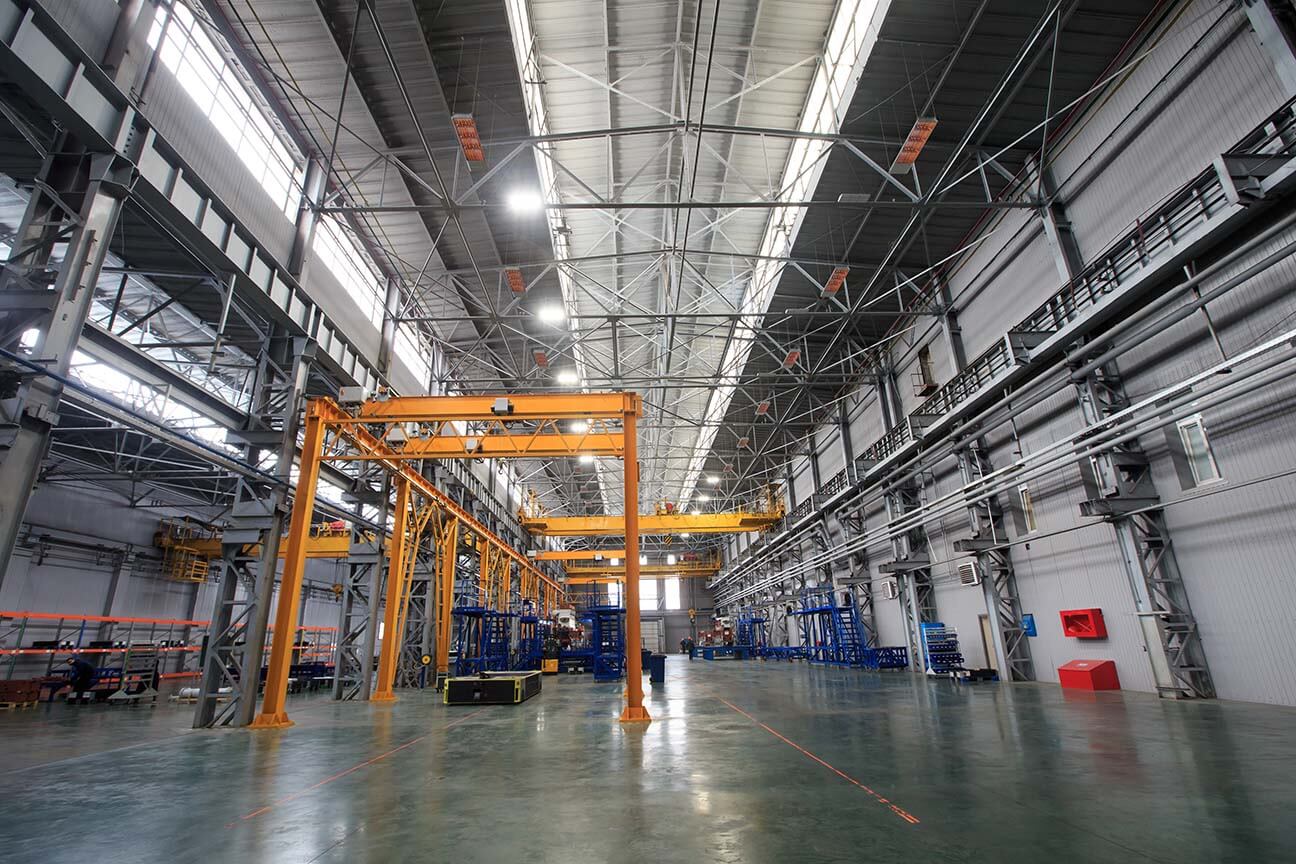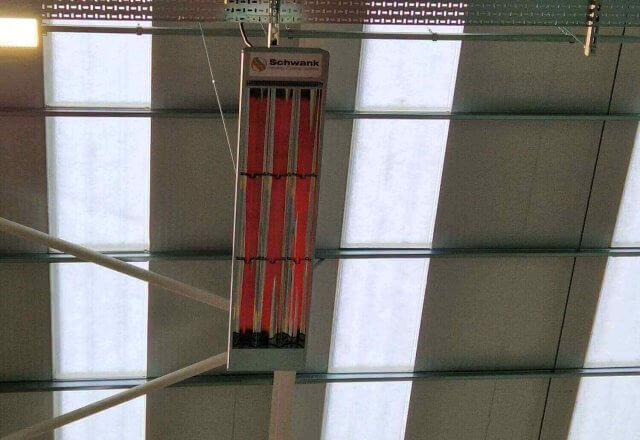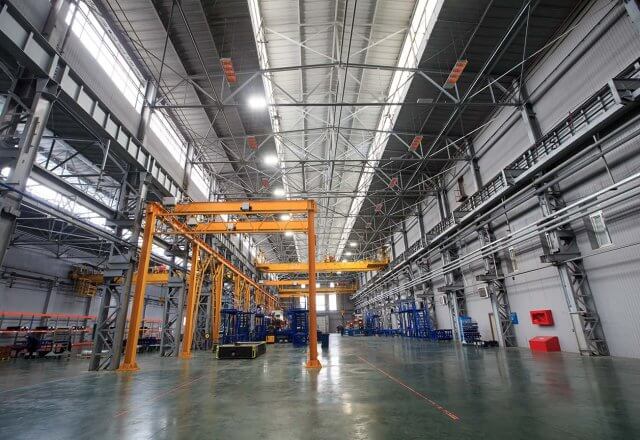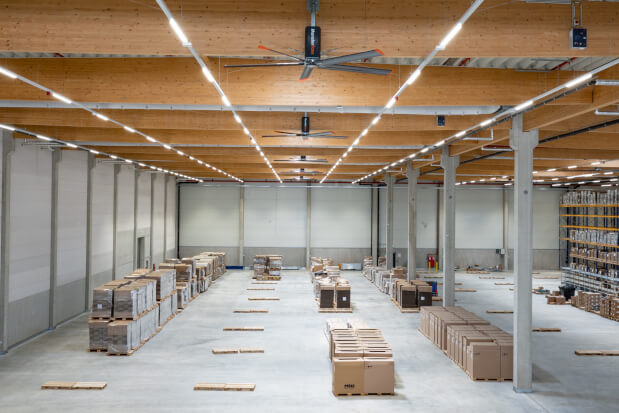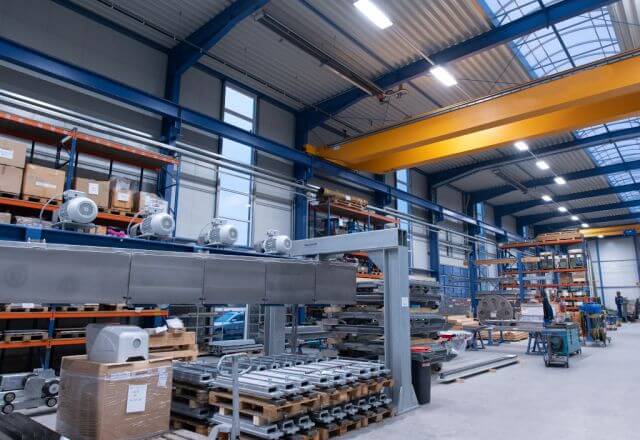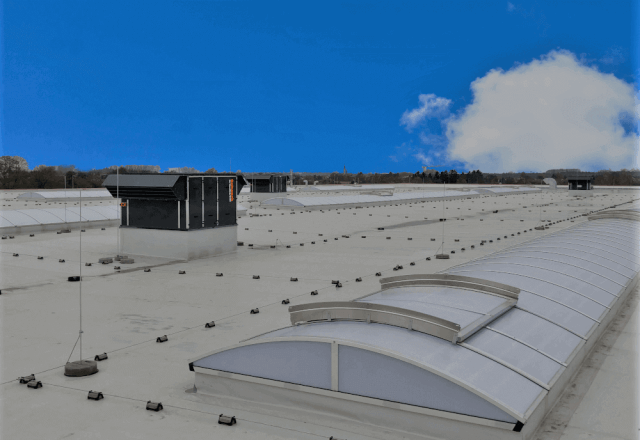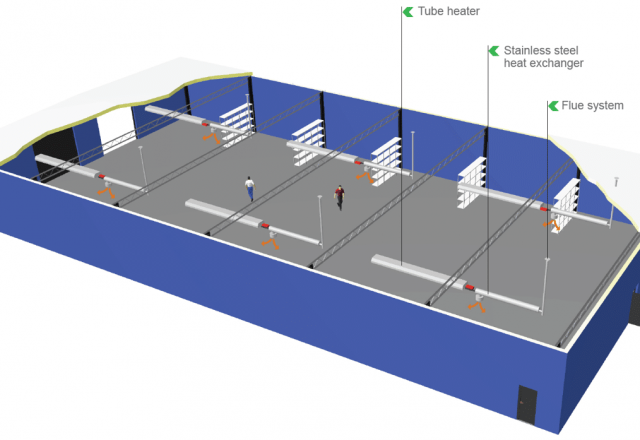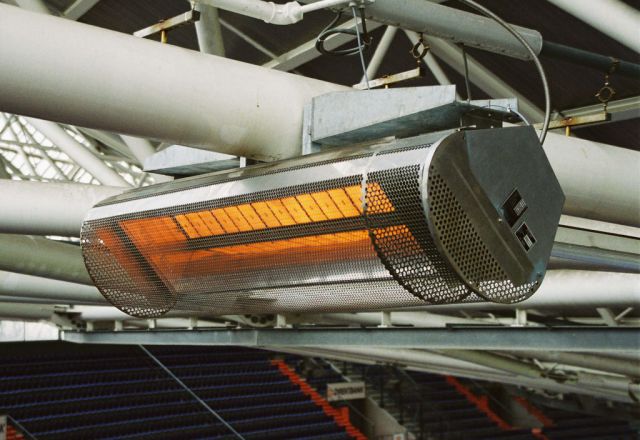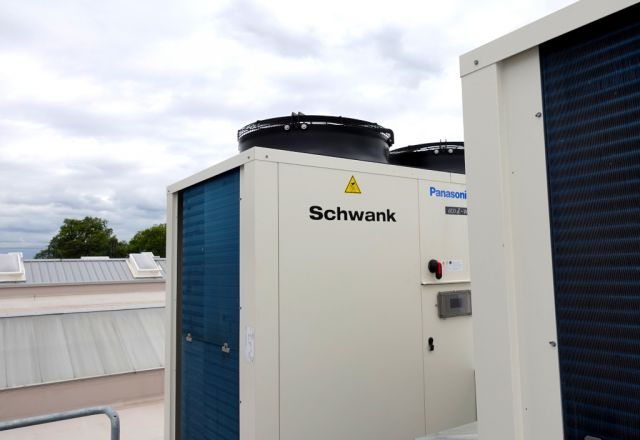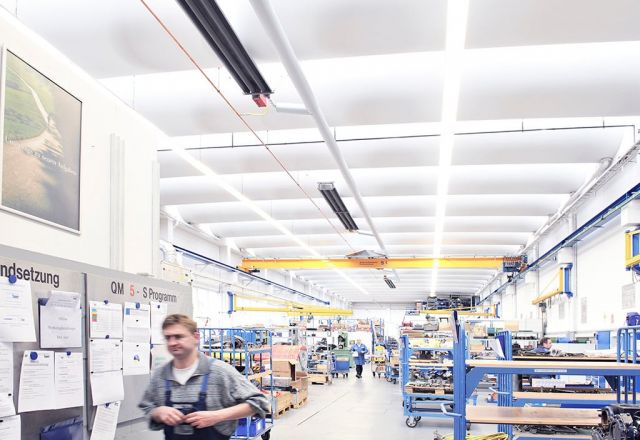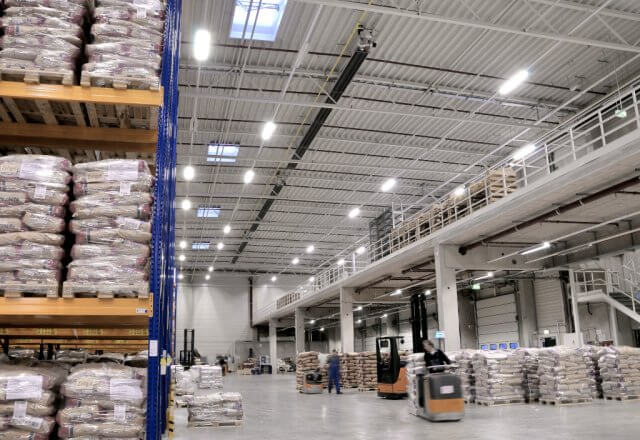Electric Radiant Heaters: The Future-Proof Solution for Large Industrial Buildings
As the world aims to reduce CO₂ emissions, electric heating solutions are becoming increasingly essential. Electrification of heating is a critical step toward achieving Net-Zero Emissions.
Historically, many companies have benefited from gas-powered infrared heaters for industrial buildings due to their cost-effectiveness, efficient operation, and low consumption. However, with the push for decarbonisation, the demand for gas is expected to decline. Can electric radiant heaters meet these same high expectations? Let’s explore their advantages and potential limitations.
Let’s discuss the following points:
- How electric heaters work
- Acquisition costs
- Consumption / energy costs
- Ecology / CO₂ balance
- Installation and maintenance costs
- Limits
- Health concerns
How electric heaters work
Essentially, electric infrared heaters operate much like their gas counterparts. They boast swift and efficient heat generation, making them especially adept at warming expansive structures. Unlike traditional heating methods that warm the entire air volume, infrared rays penetrate with minimal loss, releasing heat energy upon contact with objects or individuals. This facilitates rapid and effective heat transfer throughout buildings, allowing precise distribution where needed, whether across entire surfaces or specific zones within large work areas. Moreover, the versatility of electric radiant heaters enables comfortable heating of isolated areas or individual workstations without the necessity to warm the entire building air volume. This attribute renders them particularly advantageous for poorly insulated structures.
Acquisition costs of electric radiant heaters
Electric radiant heaters offer affordability as a key advantage. While traditionally used in consumer settings such as outdoor catering areas or indoor spaces like churches and bathrooms, their recent adaptation for industrial use has introduced cost-effective heating solutions for large buildings. Previously, achieving the necessary heating output for expansive structures involved cascading multiple small units, typically ranging from 2 kW to 3 kW, resulting in a starting price of around £450 per appliance. However, this approach incurred complexities and higher wiring expenses due to the numerous small units.
In response to industrial demands, Schwank has pioneered a groundbreaking series of heaters tailored specifically for industrial applications, boasting an impressive heating output of 18 kW per appliance. With prices starting at around £2,000, this represents a cost-effective solution when considering the price per kW of heating output. Furthermore, centralised control capabilities and simplified cabling requirements contribute to the overall economy of these appliances, making them an attractive option for industrial heating needs.
Energy Consumption / Energy Costs
While electricity is considered environmentally friendly, it often comes with a higher price tag. However, leveraging your own photovoltaic (PV) power for heating can offer a significant advantage in terms of energy costs. Therefore, when planning your heating strategy with electric radiant heaters, it’s crucial to assess your specific requirements upfront. Consider whether you only need to heat specific building areas or workstations, or if heating for the entire building is necessary. Additionally, evaluate whether your appliances have the capability to modulate and adjust to varying heat requirements, or if integrating them with a secondary system as a hybrid solution would be beneficial.
These considerations are best discussed with specialists such as energy consultants, heating engineers, or the manufacturers themselves. They can provide valuable insights and guidance tailored to your unique needs and circumstances. By engaging with experts early in the planning process, you can make informed decisions that optimize energy efficiency and cost-effectiveness while meeting your heating objectives.
Ecology / CO₂ balance of infrared heaters
Electricity generation involves various methods, including gas or coal-fired power plants, solar parks, wind turbines, and tidal power stations. Our electricity mix comprises a combination of these sources. In 2022, the generation of one kilowatt-hour of electricity resulted in an average emission of 434 grams of CO₂. However, pure energy sources such as green electricity emitted only around 32 grams of CO₂ per kilowatt-hour.
As our electricity mix transitions towards cleaner sources, electric heaters become increasingly environmentally friendly. Utilizing pure green electricity to power electric heaters ensures “green” heating, while using self-generated photovoltaic electricity achieves CO₂-neutral heating. Therefore, the environmental impact of electric heaters is directly influenced by the sustainability of the electricity sources powering them.
Installation and maintenance costs of electric infrared heaters
Electric radiant heaters stand out as superior heating options for industrial settings, boasting low installation and maintenance costs. Their lightweight design facilitates easy installation, whether suspended from the building ceiling using chains, integrated mounting brackets, or steel cables, or affixed to side walls with specialised fixtures. While a qualified tradesperson is required to connect the devices to the power supply, complexities arise when implementing intelligent control systems like bus systems or integration with building management systems, necessitating the expertise of a professional controls company, a common practice in large-scale construction projects.
Maintenance tasks are typically straightforward, involving tasks such as cleaning heating elements, inspecting joints and screw connections, and visually examining electrical connections. These routine maintenance activities, performed annually, are quick and inexpensive per appliance, further enhancing the cost-effectiveness of electric radiant heaters in industrial applications.
Limits of infrared electric heaters
Only a few electric heater manufacturers have tailored their products to suit industrial demands. In certain designs, replacing faulty heating elements proves exceedingly challenging, often necessitating the complete replacement of the emitter. This approach, while common, proves unsustainable and can incur substantial costs for building operators. Moreover, deploying numerous smaller electric heaters in tall structures presents logistical hurdles, with potential conflicts arising with existing installations such as lighting, sprinkler systems, or shelving arrangements. As the number of devices increases, so do installation costs, underscoring the wisdom of opting for larger, more robust units that align with industrial specifications, such as those offered by eSchwank.
Health risks of quartz radiant heaters
In essence, infrared heat offers a comforting warmth without the need to circulate air, eliminating drafts and dust disturbances. Additionally, radiant heat imparts a sensation of greater warmth than the surrounding air, fostering well-being during both light and strenuous activities.
However, quartz radiators operate at extremely high surface temperatures, emitting infrared radiation primarily in the short-wave IR-A range, causing the quartz elements to glow vividly red. Prolonged exposure to these devices may pose risks to eye health. It is advisable to deploy such heaters in passageways or areas where personnel spend limited durations. Hence, opting for infrared radiation with longer wavelengths proves beneficial for eye safety (e.g. eSchwank).
Conclusion
Electric infrared heaters embody all the essential qualities of an exemplary industrial heating system. They provide comfortable warmth, are cost-effective to acquire and upkeep, and contribute to achieving the net-zero emissions objective. Moreover, these heaters can be operated in an environmentally friendly manner. Although they may incur higher energy costs, this expense can be mitigated sustainably through the use of a photovoltaic system.
Advantages:
- 100% renewable possible
- low initial investment costs
- cost-effective heating when using own PV electricity
- no dust turbulence
- no draughts
- fast response time
- good heat transfer
- simple installation
- zone heating possible
- high efficiency, electricity is almost completely converted into heat
- simple and cost-effective maintenance
Disadvantages:
- limited predictable energy costs
- devices with high IR-A radiation are harmful to health (eyes)
- only a few devices on the market suitable for industrial use (eSchwank 18000)
Get personal advice now!
